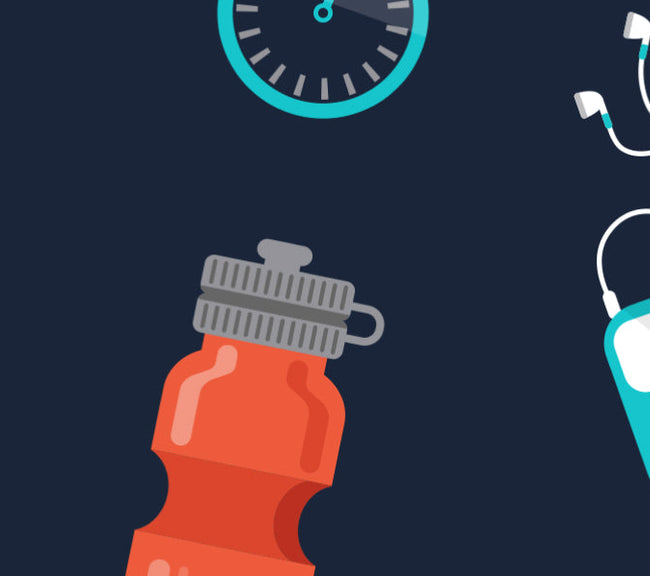With multiple meetings, assignments, projects, and deadlines, you are always racing against the clock to complete and lessen your workload. You start your day with a planned to-do list, determined to make the most of your time, but do not end up accomplishing your tasks. If only you had more than 24 hours a day! Well, that’s not possible, but perhaps, we can follow certain time management techniques to manage our work efficiently.
Most people struggle with time management. Efficiency is maximizing your results by spending the least amount of time. Before going on to how you can use time management techniques to manage your work efficiently, let us first understand some of the most effective time management strategies adopted by people and businesses across the world.
1) Pomodoro technique
When you have too much work pressure, you often forget to take breaks, and that’s what this technique focuses on. The Pomodoro technique was developed in 1980 by Francesco Cirillo, a Berlin University student. He named this technique after a tomato-shaped timer he used to track his work as a student. This technique is centered on the idea that you should break down your work into separate tasks and take periodic intervals. For example, you work for 25 minutes and take a 5-minute break after that. Once you have immersed yourself in 25 minutes of interruption-free work, you deserve a quick break to relax yourself. Once you have completed four Pomodoro’s, it’s time to take an extended break for 20 minutes. This technique's methodology is that frequent breaks improve your focus and agility, and it keeps you refreshed and recharged to tackle new tasks. Further, it also minimizes distractions and lets you focus on the task at hand. This is one of the most effective time management techniques that translates into higher productivity, eliminating burnouts, and maintaining a work-life balance.
2) GTD (Getting Things Done) Technique
Getting Things Done is one of the most comprehensive time management techniques. Developed by David Allen, this technique involves a 5-step method that helps you break bigger tasks into small manageable tasks. The first step involves capturing all the tasks and ideas that come to your mind and jotting it down to unload your mind. The second step involves processing and analyzing them and decide how to proceed with each specific item. The third step involves organizing all your processed tasks and putting labels against each like work in progress, status, timelines, etc. The fourth step involves reviewing and reflecting on your tasks and aligning them with your goals- update the tasks or remove some irrelevant ones. The final step involves getting to start with your work. When you have the entire process aligned, you can devote enough time and energy to the highest priority tasks. With this technique, you get to group all your tasks and know how to begin with each of them. This reduces your anxiety and helps you overcome procrastination.
3) Kanban board technique
Most often, we cannot complete our tasks when we fail to note and visualize it. You can follow the Kanban board technique to visualize your tasks and make a schedule for them. Kanban, meaning billboard in Japanese, encourages you to keep a visual board of your tasks and goals. You can keep a whiteboard at your desk or use a software to track your progress digitally. The three most essential columns to keep on your Kanban board are- To Do, In Progress, and Done. You can then make use of sticky notes to add your work and progress under each section. With this, you will have an adequate visualization of your work and know each work's correct status. It is useful to spend some time analyzing this board before you begin your day and deciding on the day's priorities.
4) Objectives and Key results Technique
The OKR technique is a powerful time management technique adopted by businesses and organizations like Google, Microsoft, LinkedIn, etc. This technique was developed by Andrew Grove, former CEO of Intel Corporation. This model is based on two essential elements- the objectives of your tasks and the key results expected from them. Objectives define your goals and what you want to achieve, whereas key results are the metrics of how you measure your progress. OKR is usually a part of your weekly planning process, where you clearly list down your objectives for the week ahead and its analyzing metrics. You need to set these OKRs frequently and review them so that nothing gets missed out. When you review it at the end of the week, you get a clear idea of all the goals you have accomplished and the key results for them.
5) Pareto Technique
The Pareto analysis also referred to as the 80-20 rule, is a statistical technique in decision making that selects a limited number of tasks to be completed over a specific time and produces significant results. It states that 80% of your tasks can be completed in 20% of your time, and vice versa. In other words, 20% of your work constitutes 80% of your achievements. The tasks that fall into the first category (80% achievement with 20% work) should be given a higher priority. This helps you analyze your tasks and their overall impact and help you make a decision. Further, it helps you focus your time on the work that can give maximum outputs in a limited time. This technique was first observed by an Italian economist, Vilfredo Pareto when he reviewed that 80% of the income in Italy went to 20% of the population. Since then, the 80-20 rule has been applied to everything related to work and helps you devote your focus to tasks that can provide the maximum output.
6) Eisenhower Matrix
The Eisenhower technique is one of the most popular and effective frameworks for prioritizing your tasks. Practiced and developed by Dwight. D. Eisenhower, the 34th President of the United States, he followed a matrix that recommends arranging tasks in four quadrants- Urgent + Important, Not Urgent + Important, Urgent + Not Important and Not Important + Not Urgent. The urgent tasks are the ones that need the highest priority and are time-sensitive. The important tasks are the ones that contribute to your long term goals and objectives. The urgent and important tasks should be your first priority, and you need to devote most of your time to finish the tasks under this matrix. The important but not urgent tasks should be scheduled in your calendar according to the other works in hand. The urgent but not important tasks can be delegated to others so that it is completed on time without any disturbance. All other tasks that fall in the fourth quadrant, neither urgent nor important, should either be delegated or deleted from your task list. By following this time management technique, you will be able to prioritize your tasks and manage your time effectively.
7) BoJo Technique
The BoJo or Bullet Journal technique helps you track all the tasks for the moment and the future. As the name suggests, this technique emphasizes on journaling all your tasks for reference. All you would need is a notebook and pen to write down your progress and specify your plan for the future. The core components of BoJo include maintaining a daily log of tasks and events, a weekly log and calendar for all tasks planned for the future, other collections like ideas, mind maps, trackers, etc. Using this technique, you need to follow the process of rapid logging and note down all the tasks in short notations and insert signifiers for context. While this technique gives you an overview of all your tasks, it is important to review them frequently and make changes whenever needed.
Best Techniques to follow at Work
If you want to make the most of your time, the techniques mentioned above can help you in strategic planning for your work. However, with multiple techniques, it can sometimes get confusing to decide the best strategy for you. Here are some of the best techniques to follow at work.
- OKR Technique A widely practiced technique across multinational companies, this technique makes way for all your planned objectives and the key metrics to measure the performance. When you have both your objectives and key results figured out, you will be able to devote your time to the specified tasks.
- Pomodoro technique With too much work, it is essential to take the necessary breaks and give yourself a rest. By adopting the Pomodoro technique at work, you will be able to devote your time to a specified work without any disturbance. Once the time is over, you also get to pat on your back and take a quick break. Moreover, taking frequent breaks also helps in improving your reaction time.
- Eisenhower technique This is one of the most effective time management techniques and fit for people who have a lot of work but not clear about beginning the work. By arranging all your tasks in a planned matrix, you will be able to understand and choose between your tasks. This is one of the most common techniques followed at work to understand all important and unimportant tasks.
Which technique is best for you?
The above mentioned time management techniques help in improving your ways of work, control distractions, and devote complete focus. However, with hundreds of these techniques floating around the Internet, it might get difficult to understand which one would work for you. When working at home, you can follow the GTD technique where you get to break down huge tasks into small action points and complete them easily. While working at home, it would help if you follow the Pomodoro technique. This will enable you to work without any distractions and also take necessary breaks to unwind yourself. You will be able to maintain focus without stressing yourself.
If you are a freelancer wanting to manage your time effectively, you should follow the Pareto technique where you get the most output from minimum work. By following this technique, you will be able to analyze your work and its relation to your productivity, thereby finishing more tasks in less time.
All these time management techniques vary from person to person. Hence, it is crucial to spend some time understanding the nature of your work and then deciding which technique you need to follow. Of course, nothing would change overnight, but practicing these techniques continuously with dedication will ensure a significant improvement in your work.

































